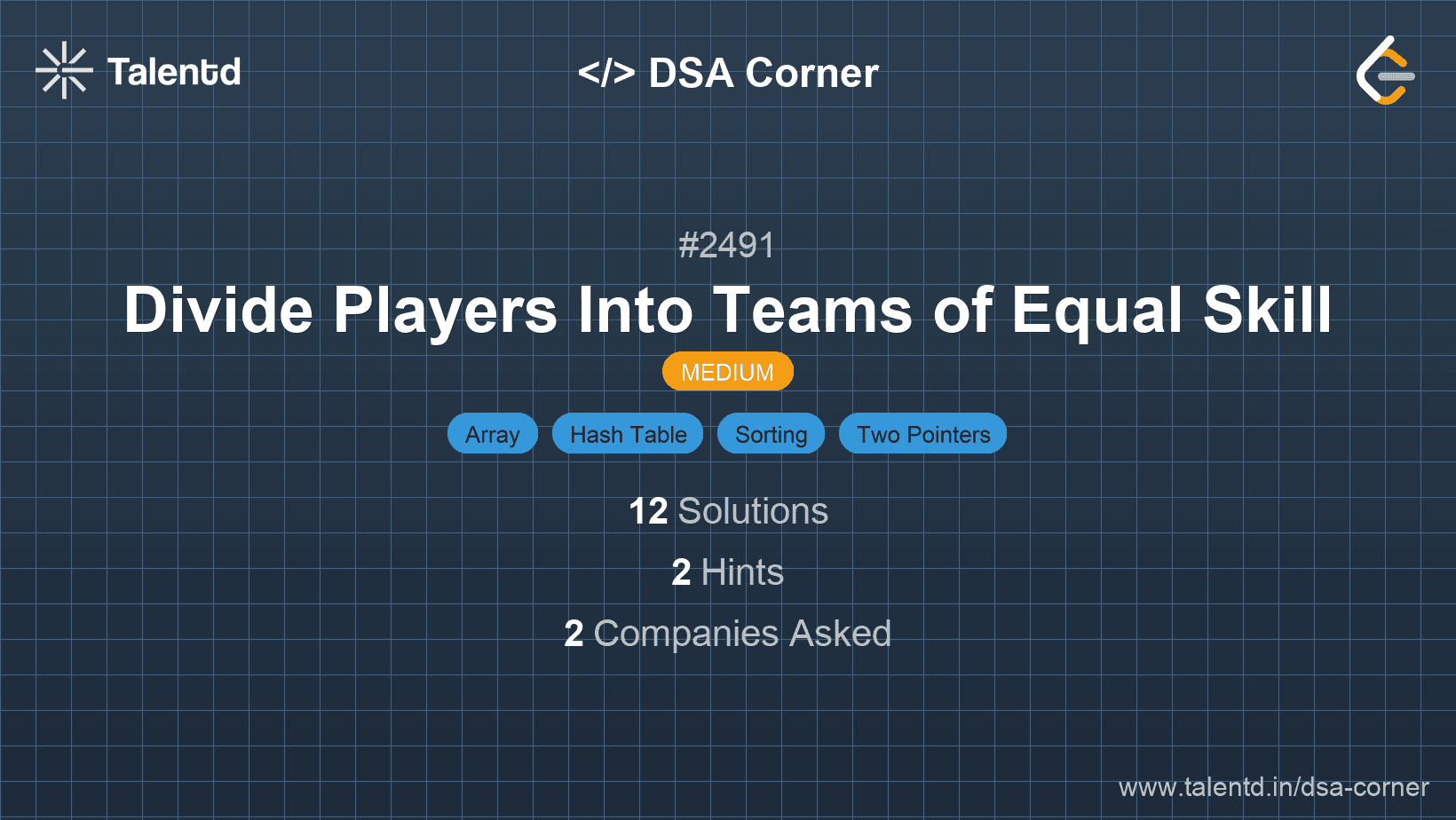
Sponsored
Sponsored
This approach involves first sorting the skill array. The goal is to form teams such that each team has an equal total skill value.
By sorting the skills, the smallest and largest unpaired skills can be paired together to potentially form a valid team. This creates a straightforward method to iterate and compare pairs using two pointers, ensuring each team's total skill is consistent.
Utilize two pointers, one starting at the beginning of the sorted skills and the other at the end, to form teams by incrementing or decrementing as conditions require. Check if teams formed balance the array accurately for equal skill sums.
Time Complexity: O(n log n), due to the sorting step.
Space Complexity: O(1), as no additional space proportional to input size is used.
1#include <stdio.h>
2#include <stdlib.h>
3
4int compare(const void *a, const void *b) {
The given C code sorts the array and checks if each pair of smallest and largest skill elements add up to the same total skill value. It uses two pointers to iterate and compute the sum of chemistries.
To solve the problem efficiently without sorting, utilize a hash map to count the frequency of each skill level. By arranging teams based on these frequencies, we can potentially balance skill totals across teams, verifying team chemistry conditions in the progress.
Each team should combine players of differing skill values such that their sum remains consistent each time. This involves iterating across the hash map keys and determining corresponding partners for forming valid teams.
Time Complexity: O(n + k^2), where n is the number of skills and k is the unique skills' range.
Space Complexity: O(k), because of the frequency array for skills up to 1000.
The Java program relies on a hash map to count each player's skill, iterating across the set to ensure all skill sums meet established criteria. It calculates chemistry by summing pairing products.